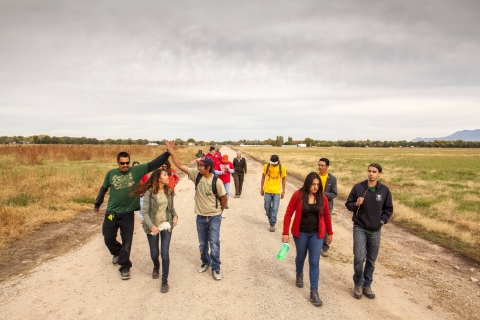What We Do
Our Services
With 80 percent of Americans living in cities and suburbs, ensuring they can connect to nature is vital – both to people’s quality of life and the future of conservation.
That’s where the Urban Wildlife Conservation Program comes in.
Since 2000, the U.S. Fish and Wildlife Service has partnered with urban and suburban communities to improve residents’ access to nature. Often, these efforts involve urban wildlife refuges — the 100+ national wildlife refuges located within 25 miles of urban areas. Participants in the Urban Bird Treaty, a Service effort combining bird conservation and community improvement, are also frequent partners.
List of Urban Wildlife Refuges
List of Urban Partnership Cities
By the Numbers
- 101 urban national wildlife refuges within 25 miles of 250,000 people or more
- 8 flagship urban national wildlife refuges
- 32 designated Urban Wildlife Refuge Partnership cities, 26 with nearby refuges
- 30 Urban Bird Treaty cities, 16 that are also associated with refuge partnerships
Conservation Through Community
The Urban Wildlife Conservation program centers on the idea that building strong, meaningful relationships with local communities is key to achieving conservation success. Community-building prizes innovation, welcomes individual participation, and works to resolve differences amicably.
At the core of the urban program are eight Standards of Excellence:
- Know and relate to the community.
- Use stepping stones to engage people in nature.
- Build partnerships.
- Be a community asset.
- Ensure adequate long-term resources.
- Provide equitable access.
- Ensure visitors feel welcome and safe.
- Model sustainability.









